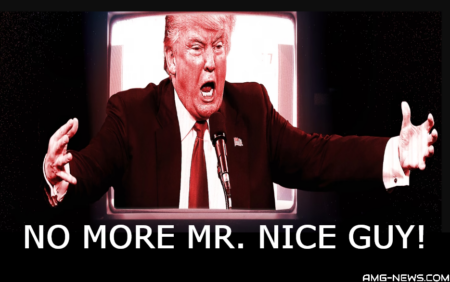BREAKING: Russia’s Ruthless Retaliation: Ukraine Plunged into Darkness as NATO Provocations Trigger Devastating Assault
Ready to uncover the truth? Sick of the lies? Join our Telegram Channel now. It’s time for the real story! My gratitude to all my readers!
Russia launches brutal retaliation on Ukraine, decimating cities and power grids in response to NATO’s provocations. Explore the escalating conflict, devastating human toll, and the looming global crisis in this high-stakes showdown.
In a devastating turn of events, Russia unleashed a massive retaliatory strike on Ukraine last night, targeting every major city and crippling the nation’s power grid. This unprecedented attack was a direct response to recent NATO actions within Russian borders. While the world watches in shock, the debate over culpability and the path forward intensifies. As the cycle of violence escalates, the question looms large: is there a way out of this brutal conflict, or are we on the brink of an uncontainable war?
The Vicious Cycle of Escalation: A Response to NATO’s Aggression
The recent Russian strikes on Ukraine mark a significant and terrifying escalation in a conflict that has gripped Eastern Europe for years. The scale of these attacks is unprecedented, with every major city in Ukraine reportedly coming under heavy bombardment. The destruction of the power grid is a clear signal from Moscow: this is no mere warning. It’s a declaration of Russia’s intent to push back, hard, against what it sees as Western provocation.
The situation has reached a boiling point. NATO’s involvement in the conflict, particularly its recent strikes within Russian territory, has not gone unnoticed. For Russia, these acts are seen as more than just support for Ukraine; they are viewed as direct assaults on Russian sovereignty. In the eyes of the Kremlin, the West has crossed a red line, and now, Ukraine must bear the brunt of the consequences.
RELATED: BREAKING NEWS! PUTIN: “Ukraine Has Just Attacked Russia’s Kursk Nuclear Power Plant!”
This retaliatory action by Russia is being framed by Moscow as a necessary response to what it perceives as Western aggression. The message is clear: any attack on Russian soil, whether by NATO or its proxies, will result in severe repercussions. In this light, Russia’s decision to strike Ukraine so broadly is not just about punishing Ukraine itself but also sending a warning to NATO and its allies.
The Human Cost: Ukraine’s Darkest Night
The impact of the Russian strikes has been catastrophic. Overnight, Ukraine has been plunged into darkness—literally and figuratively. With the power grid in ruins, millions of Ukrainians are now facing a harsh reality without electricity, heating, or communication. Hospitals are struggling to keep life-saving equipment operational, and the most vulnerable populations—children, the elderly, and the sick—are at risk.
This attack has pushed Ukraine to the brink. The humanitarian crisis that has been steadily worsening throughout the conflict has now exploded into an emergency of unprecedented proportions. Without power, the country’s infrastructure is collapsing. Emergency services are overwhelmed, and the civilian population is in a state of panic.
The psychological toll is immense. For those living in Ukraine, the sense of safety has been obliterated. There’s no longer a safe haven, no city or town that hasn’t been touched by the violence. The relentless bombardment is not just a physical attack; it’s an assault on the very spirit of the Ukrainian people.
Zelensky’s Dilemma. As the leader of a nation under siege, President Volodymyr Zelensky faces an almost impossible task. On the one hand, he must rally his people, who are exhausted and terrified, to continue resisting the Russian onslaught. On the other, he must navigate the complex and often contradictory demands of his Western allies, who are deeply invested in the outcome of this conflict.
Zelensky’s position is precarious. The support of NATO and the United States has been vital to Ukraine’s ability to resist Russian aggression. However, this support comes at a price. The more Ukraine relies on Western aid, the more it risks becoming a pawn in a much larger geopolitical game. This is the brutal reality of the situation: while Ukraine fights for its survival, the broader conflict is increasingly being shaped by the interests and actions of outside powers.
For Zelensky, the stakes could not be higher. His leadership will be judged not only by his ability to defend Ukraine but also by his capacity to find a path to peace. This is no easy task. The pressures are immense, and the options are few. But as the violence escalates, the need for a resolution becomes more urgent by the day.
The Role of the West: NATO’s Calculations and the Consequences
NATO’s involvement in the Ukraine conflict has been a double-edged sword. On one hand, the alliance’s support has provided Ukraine with the resources and backing needed to resist Russian aggression. On the other, NATO’s actions—particularly its recent strikes within Russian territory—have escalated the conflict to dangerous new heights.
The decision to engage Russia directly was not made lightly. For NATO, the goal was to send a clear message: Russian aggression will not go unchallenged. However, this strategy has come with significant risks. Russia’s retaliatory strikes on Ukraine are a direct consequence of NATO’s actions, raising serious questions about the alliance’s long-term strategy and its potential implications for global security.
The West’s approach to the conflict is increasingly being scrutinized. Critics argue that NATO’s actions, while intended to deter Russia, have instead provoked a severe and potentially uncontrollable escalation. The line between deterrence and provocation is a fine one, and in this case, it may have been crossed.
Moreover, there is a growing concern that the West’s focus on military solutions is overshadowing the need for diplomacy. While the support for Ukraine’s defense is crucial, there is also an urgent need for efforts to de-escalate the situation and find a negotiated settlement. The alternative is a prolonged and bloody conflict with no clear end in sight.
The Bigger Picture: The US, NATO, and the Broader Implications of the Conflict
The Ukraine war is not just a regional conflict; it’s a flashpoint in a much larger struggle between global powers. The involvement of the United States and NATO has transformed the war into a proxy conflict, with far-reaching implications for international stability.
For the US and its allies, the stakes are high. The conflict in Ukraine is seen as part of a broader effort to counter Russian influence and assert Western values. However, this strategy is fraught with risks. The possibility of a direct confrontation between NATO and Russia is no longer unthinkable, and the consequences of such a clash could be catastrophic.
The war in Ukraine has also exposed deep divisions within the international community. While the West has largely rallied around Ukraine, other global powers—most notably China—are watching the conflict closely, weighing their own strategic interests. The potential for the conflict to expand beyond Ukraine’s borders is real, and the repercussions could reshape the global order for years to come.
The Path to Peace: Is There a Way Out?
As the conflict in Ukraine rages on, the search for a peaceful resolution becomes increasingly urgent. The cycle of violence and retaliation has created a situation where neither side is willing to back down, yet neither can achieve a decisive victory. This stalemate is unsustainable, and the longer it continues, the more lives will be lost.
For peace to be possible, all parties involved must be willing to make difficult compromises. For Russia, this may mean stepping back from its aggressive stance and engaging in genuine negotiations. For Ukraine, it may require difficult concessions, particularly regarding its relationship with NATO and the West. And for the international community, there must be a concerted effort to support and facilitate these negotiations, rather than simply fueling the conflict.
The path to peace will not be easy, but it is the only viable solution to end the suffering and prevent further escalation. Diplomacy, dialogue, and a commitment to finding common ground must take precedence over military actions and aggressive posturing.
Conclusion: A Conflict at a Crossroads
The conflict in Ukraine has reached a critical juncture. The recent Russian strikes have escalated the violence to new levels, pushing the country to the brink of a humanitarian disaster. The involvement of NATO and the broader geopolitical implications of the conflict have raised the stakes to a point where the risk of a wider war is alarmingly high.
As the situation deteriorates, the need for a peaceful resolution becomes ever more urgent. The alternative—a prolonged and bloody conflict with no clear end in sight—is too terrible to contemplate. It is essential that all parties involved, including the international community, prioritize diplomacy and dialogue over military actions and rhetoric.
The road to peace will be difficult and fraught with challenges, but it is the only path that offers a way out of the current crisis. The world is watching, and the decisions made in the coming weeks and months will shape the future of Ukraine, Europe, and the global order for years to come.








![ARCHIVES OF TREASON: TRAITORS TO THE PEOPLE! Obama, Bush, and Clinton Pushed a Biological Weapon — Over 40 Million Dead and Counting. They Called It Science. History Will Call It Genocide. [VIDEO]](https://amg-news.com/wp-content/uploads/2025/05/Obama-Bush-and-Clinton-Pushed-a-Biological-Weapon-450x253.jpg)
![BOMBSHELL INTEL REPORT: INTERNAL BREACH AT MAHA COMMAND! Ric Grenell Executes Christian Operative in Deep-State Operation — Trump’s Anti-Woke Mission Compromised from Within [VIDEO]](https://amg-news.com/wp-content/uploads/2025/05/INTERNAL-BREACH-AT-MAHA-COMMAND-3-450x281.jpg)



1 Comment
ONE ARTICLE SHE HAS POSTED AS 100% ACCURATE – MOST OF HER STUFF IS LIES
GO TO HAL TURNER RADIO SHOW AND READ THE DEVASTATION